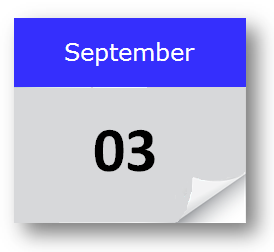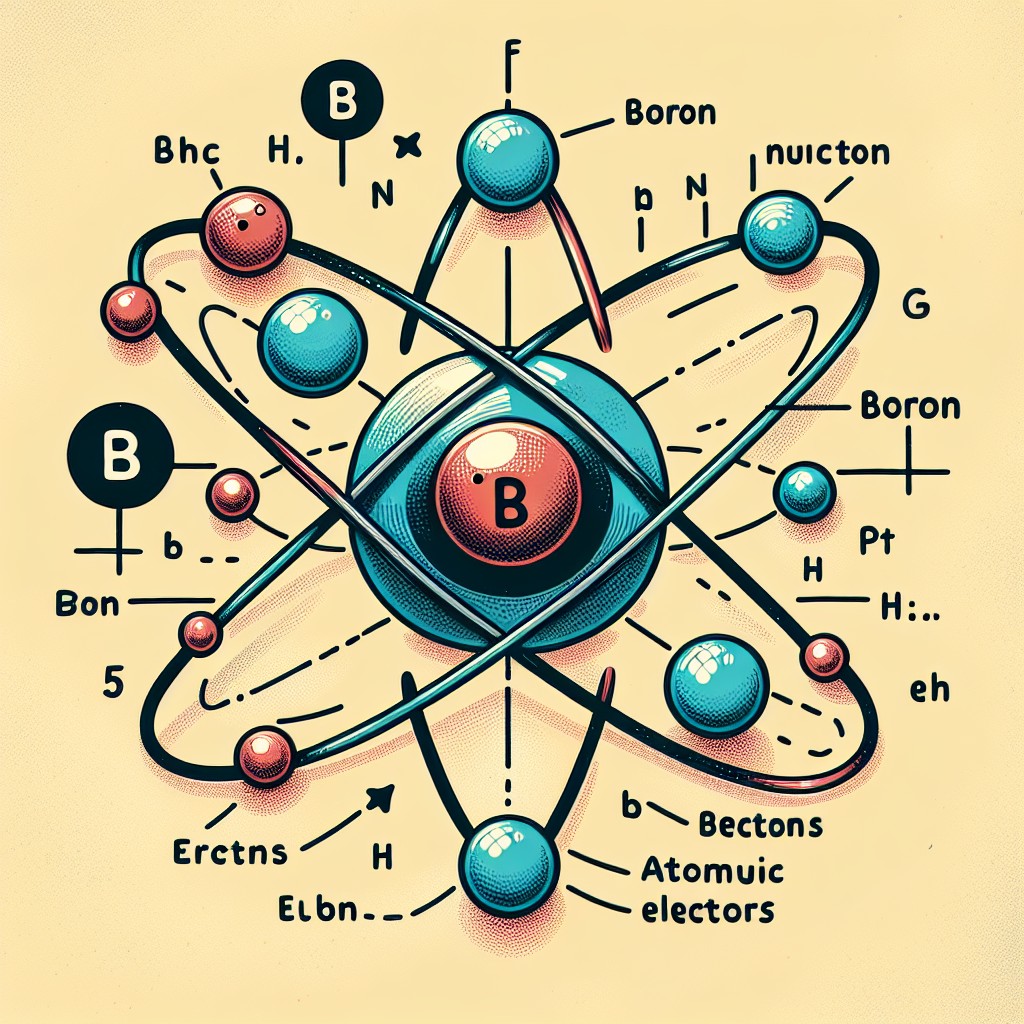| Date | Type | Event |
|---|---|---|
| 1939-08-25 | In 1939, the United Kingdom signed a military alliance treaty with Poland. On the 31st of March 1939, Britain and France pledged their support for Poland in the event that Poland was invaded. This came when the threat of invasion by German forces was proving inevitable since Hitler’s invasion of Czechoslovakia on the 15th of March that year. The declaration was made to Poland in the event of an invasion by any force, but had been drawn up with Hitler specifically in mind. On the 25th of August, the ‘Polish-British Common Defence Act’ was signed, pushing back Hitler’s planned invasion date. But it didn’t deter Hitler entirely, and on the 1st of September 1939, he invaded Poland. In response, Britain and France declared War on Germany on the 3rd of September 1939. | |
| 1939-09-01 | In 1939, Germany invaded Poland. Five German armies totalling 1.5 million troops advance on Poland on several fronts while their planes attack from the air, bombing cities including the capital of Warsaw. This undeclared act of war without provocation angered the world, while England and France prepared for war with Germany in response. In February 1938, the Austrian Chancellor Dr. Kurt von Schuschnigg met with German leader, Hitler, to reassert Austria’s sovereignty. In the meeting, Hitler bullied the Austrian chancellor into allowing Nazi officers to fill high positions in the Austrian government, threatening that if he didn’t comply, then German forces would march in and take the country by force. Dr Schuschnigg attempted to hold a referendum in the country on the 9th of March, but before the vote could be taken, Hitler pressured the chancellor into resigning, and on the 12th of March 1938, Hitler rolled into Austria with his troops and officially annexed the country to Nazi Germany. Hitler had wanted to take Czechoslovakia for a long time, but he had been warned by his generals that the natural defences and strong army made it almost unconquerable. The natural defences they referred to were the mountains in the Sudetenland region of Czechoslovakia, which made a virtually impenetrable barrier between Germany and Czechoslovakia. There were even plots in place to assassinate Hitler if he attempted such a foolish act, but the largest powers of Europe would soon make a massive mistake. After Hitler had taken Austria, with no real effort, the powers of Europe were eager to stop Hitler’s advance. In September 1938, British Prime Minister Neville Chamberlain met with Hitler at his mountain-top retreat. Hitler said he would invade and occupy Czechoslovakia unless Britain supported his plans to take the Czech region of Sudetenland (Sudetenland was full of German descendants and German loyalists, and Hitler claimed he just wanted to unite the German people). Chamberlin discussed the situation with French leader, Edouard Daladier, and they met with Hitler on the 29th of September 1938 to sign the Munich Agreement. This Agreement said that Britain and France would support Germany’s takeover of Sudetenland on the understanding that Germany would make no more attempts to expand its borders. Predictably, once Hitler had the Sudetenland, he continued the invasion of Czechoslovakia. Hitler also pressured Czechoslovakia into giving Independence to Slovakia, leaving the rest (now the Czech Republic) even more defenceless. On the 15th of March 1939, Hitler’s forces invaded Czechoslovakia, and by the evening, Hitler made his ‘Triumphant’ entrance into the capital city of Prague. Chamberlin realised his blunder in trusting diplomacy with a man like Hitler, and he now knew there would be little he could do to prevent war with such a man. On the 31st of March 1939, Britain and France pledged their support for Poland in the event that the country was invaded. The declaration was made to Poland in the event of an invasion by any force, but had been drawn up with Hitler specifically in mind. On the 26th of August, the ‘Polish-British Common Defence Act’ (or the Anglo-English military alliance) was signed, which pushed back Hitler’s planned invasion date. But it didn’t deter Hitler entirely, and on the 1st of September 1939, he invaded Poland. In response, Britain and France declared War on Germany on the 3rd of September 1939. | |
| 1939-09-03 |
In 1939 Britain and France Declare War on Germany starting World War II.
Adolf Hitler attempted to improve relations between Germany and Poland. With that in mind the on the 26th of January 1934 Germany and Poland signed the German-Polish Non-Aggression Pact. Both nations agreed that any differences would be settled through negotiations and neither side would take up arms against another for the period of 10 years. But as with most of Hitler’s promises to foreign leaders he would not hesitate to break them in the event that they conflicted with his desires.
In September 1938 British Prime Minister Neville Chamberlin met with Hitler at his Mountain top retreat. Hitler said he would invade and occupy Czechoslovakia unless Britain supported his plans to take the Czech region of Sudetenland (Sudetenland was full of German descendants and German loyalists and Hitler claimed he just wanted to unite the German people). Chamberlin discussed the situation with French leader, Edouard Daladier, and they met with Hitler on the 29th of September 1938 to sign the Munich Agreement. This Agreement said that Britain and France would support Germany’s take over of Sudetenland on the understanding that Germany makes no more attempts of expanding its borders. Predictably once Hitler had Sudetenland he continued the invasion into Czechoslovakia. Hitler also pressured the Czechoslovakia into giving Independence to Slovakia, leaving the rest (now the Czech Republic) even more defenceless. On the 15th of March 1939 Hitler’s forces invaded Czechoslovakia and by the evening Hitler made his ‘Triumphant’ entrance into the capital city of Prague. Chamberlin realised his blunder in trusting diplomacy with a man like Hitler and he now knew there would be little he could do to prevent war with such a man.
On the 31st of March 1939 Britain and France pledged their support for Poland in the event that the country was invaded. The declaration was made to Poland in the event of an invasion by any force but had been drawn up with Hitler specifically in mind. On 26th of August the ‘Polish-British Common Defence Act’ (or the Anglo-English military alliance) was signed which pushed back Hitler’s planned invasion date. But it didn’t deter Hitler entirely and on the 1st of September 1939 he invaded Poland. In response Britain and France declared War on Germany, on the 3rd of September 1939.
When Germany began its invasion of Poland between 1 of September 1939 – 6th of October 1939 Great Britain and France were preparing for possible warfare. Five German armies totalling 1.5 million troops advance on Poland on several fronts while their planes attack from the air bombing cities including the capital of Warsaw. This undeclared act of war without provocation angered the world while Britain and France prepared for war with Germany in response.
On the morning of the 3rd of September 1939 the British Ambassador to Germany, Neville Henderson, handed a communiqué to the German government stating that unless Germany gave a response declaring that they would withdraw from Poland than both Great Britain and France would be in a state of war with Germany. When the response didn’t materialise Prime Minister Neville Chamberlin addressed the UK and informed them of that they were now at war with Germany. The Royal Air Force began bombing German forces the next morning.
The Soviet Union signed a non-aggression pact on the 23rd of August 1939. The Molotov-Ribbentrop Pact (named after the two foreign ministers that signed the pact) ensured that the German’s, who were allied with Japan, would not attack Russia over the Soviet-Japanese border conflicts that had been raging since 1932. The pact also included a secret agreement which included carving up of the countries of Estonia, Finland, Latvia, Lithuania, Poland and Romania for the political influence (known as “spheres of influence”) of the Nazi party and Soviet Union. True to their word the Soviet army began their own invasion of Poland which began on the 17th of September. By the 6th of October Poland had fallen and the invaders occupied the entire country.
| |
| 1939-09-17 |
In 1939 the Soviet army joined their German allies began their own invasion of Poland The politics of Nazi Germany and Soviet Russia were vastly different and Hitler was known for his intolerance towards communism. In his autobiographical book “Mein Kampf” (which he wrote while in prison in 1924 and was published the following year) Hitler talks of his hatred of communism and his belief that the superior German race had a destiny to conquer Russia, allowing the German race to grow. However Germany and the Soviet Union did have some common ground. Both nations’ politics were opposed to the allied capitalist nations and on this basis Germany and the Soviet Union signed a non-aggression pact on the 23rd of August 1939. The Molotov-Ribbentrop Pact (named after the two foreign ministers that signed the pact) ensured that the German’s, who were allied with Japan, would not attack Russia over the Soviet-Japanese border conflicts that had been raging since 1932. The pact also included a secret agreement which included carving up of the countries of Estonia, Finland, Latvia, Lithuania, Poland and Romania for the political influence (known as “spheres of influence”) of the Nazi party and Soviet Union. On the 31st of March 1939 Britain and France pledged their support for Poland in the event that the country was invaded. The declaration was made to Poland in the event of an invasion by any force but had been drawn up with Hitler specifically in mind. On 26th of August the ‘Polish-British Common Defence Act’ (or the Anglo-English military alliance) was signed which pushed back Hitler’s planned invasion date. But it didn’t deter Hitler entirely and on the 1st of September 1939 he invaded Poland. Five German armies totalling 1.5 million troops and 2,500 tanks advance on Poland on several fronts while their planes attack from the air bombing cities including the capital of Warsaw. This undeclared act of war without provocation angered the world and on the 3rd of September England and France declared war on Germany in response. The Soviet Union and Japan had been at war with each other since the 11th of May 1939 but by the 15th of September both nations signed the Molotov-Tojo agreement which declared a ceasefire which began on the 16th of September. On the 17th of September around 600,000 Soviet troops and 5,000 tanks rolled into Poland to assist Germany in its invasion. Aided by more than 3,000 Soviet and 2,000 German planes bombing Polish targets the invading forces took Poland by the 6th of October 1939. | |
| 1939-10-06 | In 1939 Poland fell to the combined forces of Nazi Germany and Soviets Russia Adolf Hitler attempted to improve relations between Germany and Poland. With that in mind on the 26th of January 1934 Germany and Poland signed the German-Polish Non-Aggression Pact. Both nations agreed that any differences would be settled through negotiations and neither side would take up arms against another for the period of 10 years. But as with most of Hitler’s promises to foreign leaders, he would not hesitate to break them in the event that they conflicted with his desires. In September 1938 British Prime Minister Neville Chamberlin met with Hitler at his Mountain Top retreat. Hitler said he would invade and occupy Czechoslovakia unless Britain supported his plans to take the Czech region of Sudetenland (Sudetenland was full of German descendants and German loyalists and Hitler claimed he just wanted to unite the German people). Chamberlin discussed the situation with French leader, Edouard Daladier, and they met with Hitler on the 29th of September 1938 to sign the Munich Agreement. This Agreement said that Britain and France would support Germany’s takeover of Sudetenland on the understanding that Germany would make no more attempts to expand its borders. Predictably once Hitler had Sudetenland he continued the invasion into Czechoslovakia. Hitler also pressured Czechoslovakia into giving Independence to Slovakia, leaving the rest (now the Czech Republic) even more defenceless. On the 15th of March 1939 Hitler’s forces invaded Czechoslovakia and by the evening Hitler made his ‘Triumphant’ entrance into the capital city of Prague. Chamberlin realised his blunder in trusting diplomacy with a man like Hitler and he now knew there would be little he could do to prevent war with such a man. On the 31st of March 1939, Britain and France pledged their support for Poland in the event that the country was invaded. The declaration was made to Poland in the event of an invasion by any force but had been drawn up with Hitler specifically in mind. On the 26th of August, the ‘Polish-British Common Defence Act’ (or the Anglo-English military alliance) was signed which pushed back Hitler’s planned invasion date. But it didn’t deter Hitler entirely and on the 1st of September 1939 he invaded Poland. Five German armies totalling 1.5 million troops and 2,500 tanks advanced on Poland on several fronts while their planes attacked from the air bombing cities including the capital of Warsaw. This undeclared act of war without provocation angered the world and on the 3rd of September England and France declared war on Germany in response. The Soviet Union and Japan had been at war with each other since the 11th of May 1939 but by the 15th of September, both nations signed the Molotov-Tojo agreement which declared a ceasefire which began on the 16th of September. On the 17th of September around 600,000 Soviet troops and 5,000 tanks rolled into Poland to assist Germany in its invasion. Aided by more than 3,000 Soviet and 2,000 German planes bombing Polish targets the invading forces took Poland by the 6th of October 1939. | |
| 1939-10-10 | In 1939 “The Soviet-Lithuanian Mutual Assistance Treaty” was signed allowing the Soviets to place five bases in Lithuania. Lithuania was one of several smaller nations of Europe forced to sign these treaties all of which were outlined by the Molotov-Ribbentrop Pact (named after the two foreign ministers that signed the pact) which was signed on the 23rd of October 1939. The pact was a non-aggression treaty between Germany and Russia which was also a secret agreement which included the carving up of the countries of Estonia, Finland, Latvia, Lithuania, Poland and Romania for political influence (known as “spheres of influence”) of the Nazi party and the Soviet Union. Poland had already fallen to the two nation’s invasion forces (Germany began on the 1st of September followed by the Soviets on the 17th of September 1939) and one week after Russia joined the invasion, on the 24th of September 1939, the Soviet Navy began patrolling the Estonian shores pressuring their government to allow Soviet military bases in Estonia. The Soviets then forced Latvia to sign a treaty on the 5th of October 1939 forcing them to allow military bases in their country. On the 10th of October 1939 “The Soviet-Lithuanian Mutual Assistance Treaty” was also signed allowing the Soviets to place five bases in Lithuania. Soviet Russia continued their own invasion of European countries with their invasion of Finland which began on the 30th of November 1939 (their invasion continued ultimately unsuccessfully until the 13th of March 1940 in what was called “The Winter War” but the Soviets did gain around 11% of Finnish territory). As the German army forced the fall of Paris on the 14th of June 1940, the Soviets began a military blockade of Estonia before their full invasion began on the 16th of June. Already occupied by the Soviet military, the Estonian government capitulated the following day on the 17th of June 1940 and Russia then began its invasion of Latvia. The Soviet Union also issued an Ultimatum to Lithuania on the 14th of June 1940 and invaded the following day. | |
| 1939-11-08 | In 1939 a failed assassination attempt of Adolf Hitler, Goering and Goebbels left 7 dead NAZI supporters and another sixty three injured German Carpenter Johann Georg Elser claimed he was not against Nazism itself but the extreme radicalism of its leadership which he could see in the autumn of1938 would lead to war. He decided that he must do something to change the course of Germany’s future and planned the assassination of its main three leaders. Every year Hitler, Goering and Goebbels attended a celebration of the Beer Hall Putsch (see below) in Munich, called the Bürgerbräukeller, and this was Elser’s chosen venue for his plan. On the 8th of November 1938 Elser arrived in Munich and visited the beer hall. He surveyed the building deciding on the best point to place explosives and decided on a pillar near to Hitler would be giving his annual speech in the huge venue. Later he got a labouring job on a quarry giving him access to explosives which he slowly accumulated for his dead. He continued to plan and by August 1939 Elser began sneaking into the Bürgerbräukeller at night and building a hidden cavity in the pillar where he would hide the explosives. The 8th of November soon arrived and the bomb was in place and set ready to take out Hitler during his speech. But unknown to Elser the commencement of WWII had almost prevented Hitler from attending the annual celebration. Although Hitler did attend he gave an uncharacteristically short speech and left with his entourage to head for Berlin where he could continue his War plans. Just thirteen minutes after Hitler’s speech ended the bomb exploded killing 7 NAZI supporters and injuring another 63. Elser was captured at the Swiss border almost an hour before the explosion with plans and detonators on his person. He was interrogated by the Gestapo and spent several years before his execution. | |
| 1939-11-30 | In 1939 The Soviet Bombing of Finnish Cities Began: A Prelude to the Winter War The bombing of Finnish cities by the Soviet Union was a critical and controversial event in the lead-up to the Winter War (1939–1940). On November 30, 1939, just days after the Soviet Union renounced its non-aggression pact with Finland, Soviet forces launched an aerial bombing campaign against Finnish cities, including the capital Helsinki. These attacks marked the beginning of a conflict that would test the resolve and resilience of the Finnish people. Following the signing of the Molotov-Ribbentrop Pact in August 1939, the Soviet Union sought to expand its sphere of influence in Eastern Europe. Finland, strategically located near Leningrad (modern-day St. Petersburg), became a primary target. The Soviet Union demanded territorial concessions from Finland, including the cession of land in the Karelian Isthmus and the lease of the Hanko Peninsula for a military base. Finland refused these demands, leading to escalating tensions. Believing that Finland could be subdued quickly, Soviet leadership sought to intimidate the Finnish government and population through the use of overwhelming force, starting with air raids on key cities. On November 30, 1939, Soviet planes bombed Helsinki, Viipuri (now Vyborg), and other Finnish cities. The attacks targeted industrial facilities, military installations, and civilian areas. In Helsinki, over 90 buildings were destroyed or heavily damaged, and hundreds of civilians were killed or injured. The bombings also caused widespread panic among the population. Despite being unprepared for a large-scale war, Finland’s air defenses managed to down several Soviet bombers. Finnish forces quickly mobilized to protect key infrastructure and limit further damage. Civilians took shelter in basements, bomb shelters, and improvised safe zones as the bombings continued sporadically throughout the conflict. The Soviet bombings drew condemnation from the international community. The League of Nations denounced the attacks as a violation of international law and expelled the Soviet Union on December 14, 1939. The bombings galvanized global support for Finland, leading countries like Sweden, the United Kingdom, and the United States to provide moral, material, and financial aid. |



